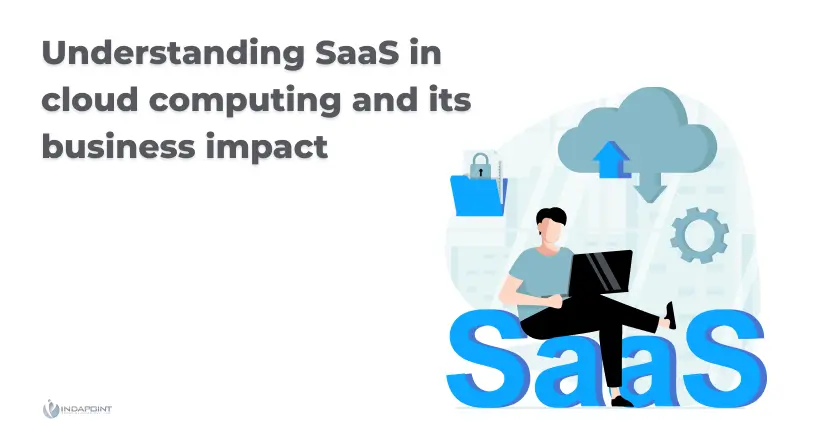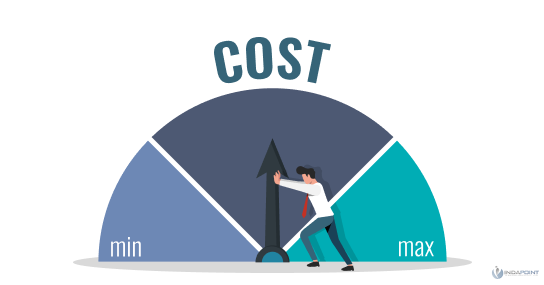Understanding SaaS in cloud computing and its business impact
January 30, 2023

Software-as-a-service has quickly become one of the most well-liked models for cloud computing development services (SaaS). The following is a simplified explanation of software as a service (SaaS): a software delivery model in which a service provider bundles applications for customers and makes them accessible to those customers via the internet.
Alongside infrastructure-as-a-service (IaaS) and platform-as-a-service, software-as-a-service (SaaS) is one of the three primary categories of cloud services (PaaS).
What exactly does “SaaS” mean?
The term “software as a service,” also abbreviated as “SaaS,” refers to a type of service that is capable of delivering applications through the internet.
What does it mean to offer something “as a service”?
Take into consideration the distinction between using valet parking and renting a parking spot. Although both offer the consumer the same benefit—a location to park their vehicle—a parking spot is considered to be a product, whereas valet parking is considered to be a service.
In the past, software manufacturers would sell their products to end customers in the form of packaged software. Despite this, they provide software delivery and support over the cloud for their customers. They hoard the application’s databases and the code that is necessary for it to function, and they run the application on their own servers. Therefore, software as a service is more analogous to a service than it is to a product.
Why do businesses go for a software-as-a-service (SaaS) solution?
Participants in a survey conducted by Research have compiled a list of the most important considerations that went into determining whether or not they would develop a software as a service (SaaS) offering; this is something that you should take into account as you evaluate the feasibility of developing your own SaaS practice. Creating new opportunities to attract new customers was cited as the primary motivation for 66% of the independent software vendors (ISVs). 59% of the people who were polled said that the advantages of having a recurring revenue stream had a role in their decision. Product innovations are also named as the third item on the list of elements that impact this decision, and they come in at number three.
Benefits of SaaS in cloud computing
Unlock new client subgroups and categories

With software as a service (SaaS), you can sell to a larger client base, including adding customer groups that were previously unprofitable.
When you choose a SaaS model that operates on the public cloud, you get rid of many of the obstacles that prevent geographic expansion. In a typical business model, expanding into new geographic areas frequently necessitates forming local partnerships or dispatching a team of support engineers to the many customer locations located all over the world. Both of these choices are not only costly but also time-demanding. However, if you choose to put your programme in the public cloud, you will be able to make use of the worldwide infrastructure and support offered by your cloud provider. This will allow you to give end customers higher performance and reduced latency. This global infrastructure is able to support local needs for data residency, sovereignty, and compliance in addition to those requirements.
Reduce complexity and bring down the total cost of ownership for customers

One of the most significant advantages of moving to a SaaS delivery model is the ability to consolidate all of a customer’s hardware and equipment into a single, uniform environment for the purpose of application deployment. Because it simplifies and lessens the overall cost of the underlying infrastructure, the SaaS delivery model almost always ends up producing considerable cost savings for your company’s clients. When using on-premises apps, clients are typically required to make significant investments in infrastructure in order to host software. These expenses can easily skyrocket into millions of dollars, depending on the size of the firm and the level of performance required by the application. The customer is responsible for making continuous investments in the asset’s ongoing maintenance and support. By taking on the task of hosting software either through Microsoft or a PaaS/IaaS third-party partner, you can relieve your clients of a significant portion of these expenditures when you provide them with SaaS. Additionally, the benefits of a single application deployment environment are not exclusive to the customers of the firm and may be enjoyed by employees as well. Your development teams will be able to concentrate more on the creation of high-value product features thanks to a single environment, rather than spending as much time maintaining system infrastructure.
Incorporate newly acquired cloud services
Integrating value-added cloud services enables you to enhance the quality of the services you provide to customers by delivering capabilities that, in the past, would have required a significant investment of both time and money to separately develop. A significant portion of these services can be accessed through the ecosystem of the cloud platform with just minimal requirements for integration and support. A little under half of the businesses polled stated that they had increased the number of capabilities and feature sets available in their SaaS product. When firms migrated their software to the cloud, some of the most important capabilities they added were advanced data analytics, business intelligence, visualisation, and collaboration tools. These capabilities were added in response to consumer demand. These services were brought into the system either through the incorporation of first-party services that were made available by Microsoft Azure and other cloud providers or through a partnership with another SaaS company.
Leverage aggregated data
Cloud ecosystems make it simpler to collect data on consumer usage, which in turn provides you with a more in-depth understanding of the requirements and problems faced by customers. You will be able to concentrate your product development efforts on the features that are most essential to your consumers and deliver those features more quickly if you produce insights from the data collecting you do with your application. Participants in the Keystone survey reported that they were able to increase the speed of product development by 33 per cent, which contributed to a 50 per cent reduction in their development cycles.
Conclusion
SaaS offers the chance to provide greater value to your clients while also boosting profitability and streamlining internal processes because of its lower complexity and expense. This is true whether you are a startup that is cloud-native or an established ISV with historical on-premises software solutions. Who wouldn’t want something like this?
A great number of businesses rely on our assistance as they make the switch to a SaaS solution. Are you interested in learning how we accomplish this? Reach out to us!





